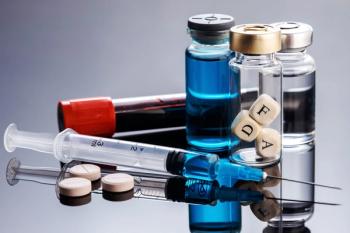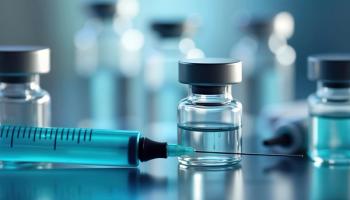
- Managed Healthcare Executive February 2019 Issue
- Volume 29
- Issue 2
The State of Biosimilars in 2019
While still largely a new phenomenon, biosimilars are here to stay-and this year will only bring more of them to market.
The U.S. biosimilars market gained momentum over 2018, as more of the agents were submitted for FDA review and more regulatory approvals were granted, including additional immunosuppressive and cancer-treatment biosimilars.
Sandoz’s biosimilar adalimumab, Hyrimoz (adalimumab-adaz) injection was approved in October 2018, and Celltrion’s Truxima (rituximab-abbs), the first biosimilar to be approved in the U.S. for non-Hodgkin lymphoma and the first approved biosimilar to Rituxan, was approved in November 2018.
“We’re just seeing the cusp or initial wave of these cancer-treating biosimilars,” says Gary H. Lyman, MD, MPH, FASCO, FRCP, professor of medical oncology at the University of Washington School of Medicine, in Seattle. Lyman also serves as chair of the American Society of Clinical Oncology (ASCO) Biosimilars Work Group.
In May 2018, the FDA approved a biosimilar version of epoetin alfa (Epogen/Procrit), called Retacrit (epoetin alfa-epbx), for treatment of chemotherapy- and kidney disease-associated anemia, as well as for anemia resulting from zidovudine among HIV-positive patients. In June, the FDA approved Mylan and Biocon’s application for Fulfila (pegfilgrastim-jmdb), the first biosimilar to Neulasta (pegfilgrastim) for reducing infection risk in some patients with non-myeloid cancers who are administered myelosuppressive chemotherapy.
There are now 15 FDA-approved biosimilar products, up from nine in 2017. Of the four oncology biosimilars approved in 2018, three have already gone to market, says Rick Lozano, vice president of biosimilars and integrated business development, AmerisourceBergen.
Additional biosimilars approvals are coming in 2019 and more applications will be submitted, as more brand-name biologics’ patent protection periods expire.
“The regulatory framework is pretty well settled now,” Lyman says. “We’re still waiting for the final rules for some of the other aspects of biosimilar approval, such as substitution and interchangeability.”
Biosimilars do not have to be declared interchangeable with their reference brand-name biologics to be prescribed, but an interchangeability determination would allow substitution by pharmacists.
“While it will take time for us to fully benefit from recent regulatory updates, the changes and communications we saw coming from policy makers in 2018 were incredibly promising and present great opportunities for 2019,” Lozano says. “Looking ahead, policy makers are seriously exploring the interchangeability between biosimilars and their reference products as part of the blueprint for lowering drug prices.”
Congress and the FDA made it clear in 2018 that biosimilars “will be part of the solution” for controlling healthcare costs, Lozano says. “That alignment is starting to better pave the way for more products to come to market, as evidenced by this year’s uptick in approvals.”
The FDA is also preparing new guidelines on biosimilar product labels, which Lozano hopes will create a “more level playing field” between biosimilars and biologics by helping to reassure healthcare providers that biosimilars are safe and effective.
Lozano expects to see continued momentum in 2019, with more approvals and increasing acceptance of biosimilars as a viable treatment option.
“We are confident that the U.S. market will continue to evolve in the direction of the European biosimilar market, as more and more obstacles, such as patent challenges and litigation, are reduced,” he
Will the U.S. catch up to Europe?
The U.S. has lagged behind Europe on biosimilars approvals and uptake, and some analysts have pointed to uncertainty about anticipated cost savings, regulatory and legal issues, contracting mechanisms, and physician unfamiliarity with biosimilars as potential barriers to uptake.
Because biosimilars are “highly similar” but not identical, on a molecular level, to originator biosimilars, some clinicians have had concerns about the idea of switching patients from well-known biologics to less familiar biosimilars. Patients have been switched to biosimilars in most cases only after brand-name biologics lost efficacy or brought intolerable toxicities.
“Europe has been ahead of the United States on biosimilar approvals for years but the good news is this: none of them have been withdrawn from the [European] market or seen red flags with major safety or efficacy issues,” Lyman says. “Nevertheless, recently, a submission for a biosimilar for rituximab for lymphoma was turned down by the FDA, for reasons they know and I don’t, and the company has decided not to challenge or resubmit.”
Cancer biosimilars take center stage
“Over the past year, for the first time, we have had a number of oncology biosimilars FDA-approved for cancer treatments as opposed to supportive care agents like growth factors,” Lyman says, citing approvals since September 2017 for the biosimilars Mvasi (bevacizumab-awwb), Ogivri (trastuzumab-dkst), Ixifi (infliximab-qbtx), Hyrimoz, and Truxima.
The first biosimilar approval was for Zarxio (filgrastim-sndz), a biosimilar G-CSF myeloid growth factor used in supportive cancer care, which was approved back in March 2015. In 2018, three more filgrastim and pegfilgrastim biosimilar products were approved.
But Lyman cautions that biosimilars are still in their early days.
“Biosimilar trastuzumab and bevacizumab were approved in December 2017, but both of these met with delays and even now they are just beginning to enter the marketplace, so we really don’t yet have data on their uptake,” he says.
Oncology biosimilars have been “mainly a good-news story,” Lyman says.
“We have multiple new approvals and the approval process seems to be going smoothly-with perhaps one glitch that was part of the growing pains of a new process,” he says.
As the FDA weighs the evidence for a new approval, the agency often asks an oncology drug advisory committee to review that evidence and make a recommendation, Lyman explains.
“Usually the FDA decision is in line with the recommendation of the advisory committee,” Lyman says. “There’s public comment, a whole transparency process.”
But the agency recently skipped that step in 2018 when approving Fulphila (pegfilgrastim-jmdb), a biosimilar long-acting growth factor used in the supportive care of cancer patients, Lyman says.
“They chose not to do that this time, probably because they felt this is just another growth factor and they’ve done this before,” he says. “So, there was no public display of the evidence.”
That move might well slow its uptake, Lyman says.
Uptake: Transparency will be key
“You have the issue of integration of biosimilars into clinical practice, into clinical practice guidelines or simply for uptake in health systems and clinical practices or clinics,” Lyman says. “So, this biosimilar was approved but when it came to a decision to recommend this form of growth factor biosimilar in a clinical guideline, the guideline review committee had no data available on which to base a decision because they had no data from the FDA and the company had not yet published its results from its studies.”
That episode goes to show that FDA approval is “necessary but not necessarily sufficient” for integration into clinical practice, Lyman says.
Oncologists and other clinicians-and guidelines panels-want access to all of the evidence the FDA reviewed at the time of approval, Lyman says. “Clinicians want to see trial data and results and to come to their own conclusions.”
“Hopefully this was a one-off,” Lyman says. “Whether or not the data behind these drugs are given to a drug review committee, the companies and the FDA need to make these results available to clinicians and professional organizations, and payers presumably as well want to review these data to make sure patients are being served.”
Will biosimilars deliver on cost-savings expectations?
Lyman and Lozano agree that as FDA biosimilars approvals accumulate, they should increase competition between biosimilar products to bring down cost.
“Pfizer most recently launched Retacrit at a substantial discount to the reference product Epogen,” Lozano says.
A second Neupogen biosimilar, Pfizer’s Nivestym (filgrastim-aafi), is now on the market, for example.
“Pfizer launched Nivestym at a wholesale acquisition cost [WAC) that is 30.3% lower than that of the reference product and is 20.3% lower than that of Sandoz’s Neupogen biosimilar,” says Lozano. The introduction of second entrants for a reference product, like Nivestym, within the U.S. market will give patients and their healthcare providers improved access to a high-quality, potentially lower-cost treatment option.”
“As of 2018, we have multiple supportive care biosimilar growth factors, which bring competition to that space that has for decades been dominated by the originator or innovator products, which are very costly,” Lyman says. “At the same time, the predominant growth factor used in the U.S. has been a long-acting product that requires only a single injection with each treatment cycle, and the brand-name has dominated the horizon for a couple of decades but now we will have biosimilar competition there too, in the near future.”
Biosimilar filgrastim is on the market at 10% less than the brand-name originator, Lyman says. “That’s with very early data and very little competition,” he says. “With time, we’d like to see that become 20% or 30% price reduction. It’s never going to be 80% like with generics. These are more complex molecules. But it seems to be an early trend toward a reduction in pricing.”
As biologic products’ patents continue to expire and patent litigation is resolved, 2019 should see quick approvals and market launches of more biosimilars.
“In 2019, we’re hoping to see the oncology biosimilars that haven’t launched yet due to pending patent expirations and litigation-such as [biosimilar] bevacizumab-come to market as quickly and efficiently as possible,” Lozano says. “We will also continue to watch [biosimilar] pegfilgrastim and neupogen products, which are currently filing for FDA approvals.”
But there are still headwinds that will likely slow the widespread adoption of oncology biosimilars. Chief among these are concerns about reimbursement under the current “buy and bill” payment system, Lozano says.
“It’s also important to keep in mind that oncologists’ familiarity with and confidence in using biosimilars is critical to a successful formulary,” Lozano says. “As more oncology biosimilars come to market, physician education will continue to be a critical component of a product’s launch strategy, and it must start well before a therapy is in market and can be supplemented by partners throughout the supply chain. Our group purchasing organization, ION Solutions, is in the process of developing educational resources and programs that will help oncologists include biosimilars in their prescribing, specifically addressing concerns about interchangeability questions. This will be an important step in promoting biosimilar use in the coming years.”
Interchangeability
Patients and clinicians might become more confident in biosimilars if they are granted FDA “interchangeability” status rather than only biosimilarity.
But earning that FDA designation requires biosimilars manufacturers to pay for new clinical trials, and firms have not yet pursued that option.
That could change in the 2019. Indeed, Boehringer Ingelheim is already pursuing an interchangeability trial for
Lyman believes more are likely on the way, because interchangeability could be an attractive marketing tool.
“The reason I think it will probably come is that as more of these biosimilars in a given class, like the growth factor biosimilars, all competing with one another, it’s very possible that a new one coming along will do something to distinguish themselves from the pack to give people a reason to give up using the originator,” he says. “If your patient is traveling or switching doctors or health systems, they can switch to our product because it’s interchangeable.”
As part of the federal government’s effort to address rising drug prices, the FDA is reviewing biosimilar/biologics interchangeability, Lozano says. Legislatures in 38 states have already passed bills to support the automatic substitution of biologic drugs with approved biosimilars at the pharmacy level, once the FDA starts granting interchangeability designations, he says.
Articles in this issue
almost 7 years ago
Managed Care Technology Survey 2019almost 7 years ago
The 4 Biggest New Areas to Focus on in 2019almost 7 years ago
How Three Hospitals Use Predictive Analytics to Reduce Readmissionsalmost 7 years ago
Four Trends Health Execs Need to Follow in 2019almost 7 years ago
Six Healthcare Technologies Coming in the Next 10 Yearsalmost 7 years ago
The Impact of Big Data on Medical Decisionsalmost 7 years ago
The Biggest Barrier to Home HealthcareNewsletter
Get the latest industry news, event updates, and more from Managed healthcare Executive.

















































